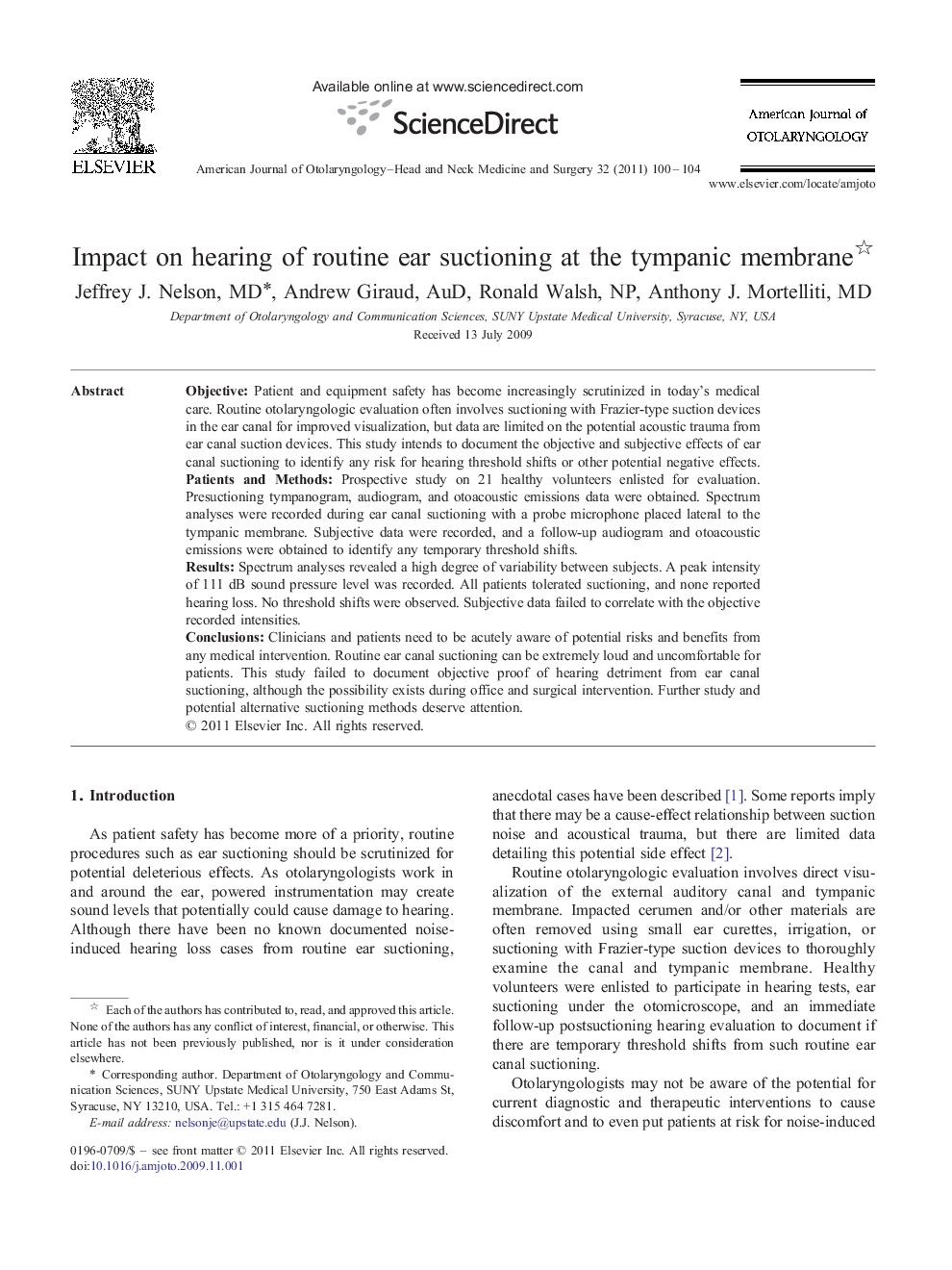| Article ID | Journal | Published Year | Pages | File Type |
|---|---|---|---|---|
| 4103601 | American Journal of Otolaryngology | 2011 | 5 Pages |
ObjectivePatient and equipment safety has become increasingly scrutinized in today's medical care. Routine otolaryngologic evaluation often involves suctioning with Frazier-type suction devices in the ear canal for improved visualization, but data are limited on the potential acoustic trauma from ear canal suction devices. This study intends to document the objective and subjective effects of ear canal suctioning to identify any risk for hearing threshold shifts or other potential negative effects.Patients and MethodsProspective study on 21 healthy volunteers enlisted for evaluation. Presuctioning tympanogram, audiogram, and otoacoustic emissions data were obtained. Spectrum analyses were recorded during ear canal suctioning with a probe microphone placed lateral to the tympanic membrane. Subjective data were recorded, and a follow-up audiogram and otoacoustic emissions were obtained to identify any temporary threshold shifts.ResultsSpectrum analyses revealed a high degree of variability between subjects. A peak intensity of 111 dB sound pressure level was recorded. All patients tolerated suctioning, and none reported hearing loss. No threshold shifts were observed. Subjective data failed to correlate with the objective recorded intensities.ConclusionsClinicians and patients need to be acutely aware of potential risks and benefits from any medical intervention. Routine ear canal suctioning can be extremely loud and uncomfortable for patients. This study failed to document objective proof of hearing detriment from ear canal suctioning, although the possibility exists during office and surgical intervention. Further study and potential alternative suctioning methods deserve attention.
